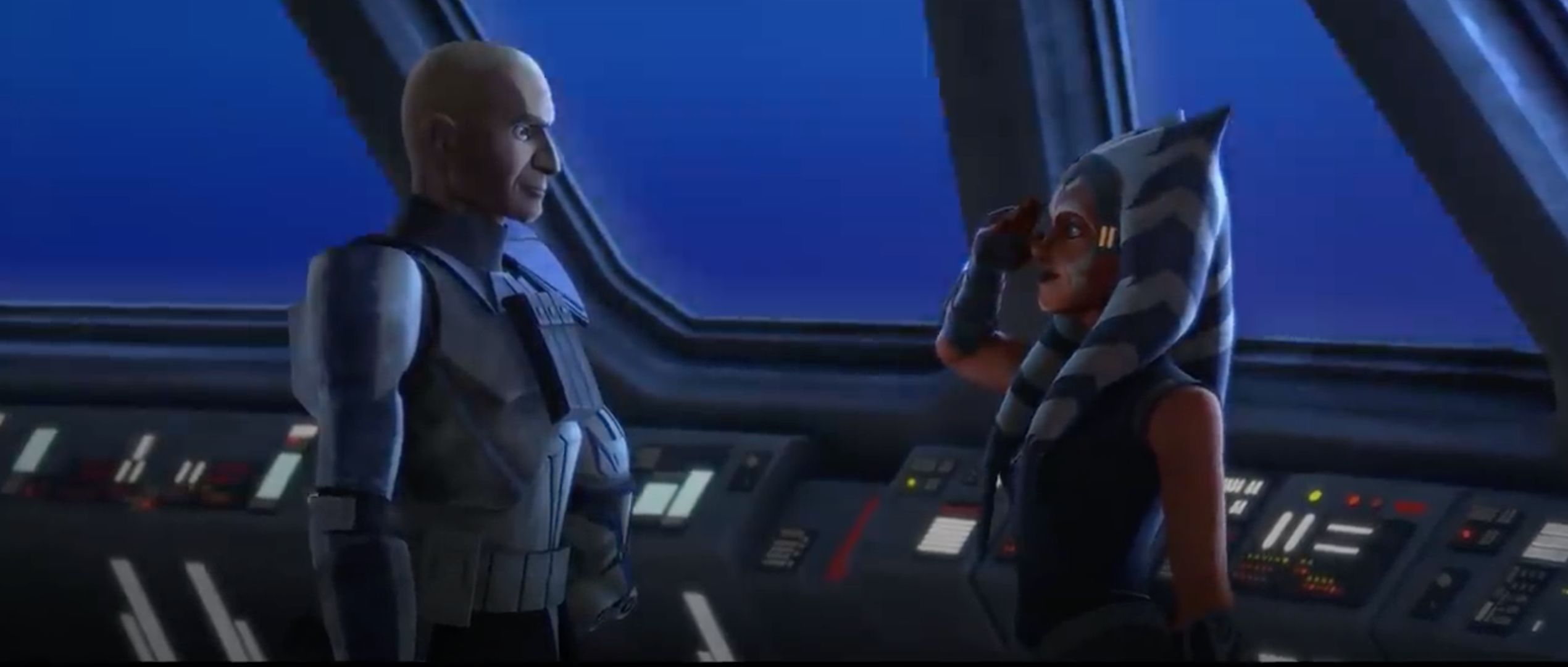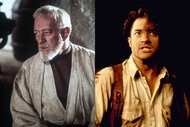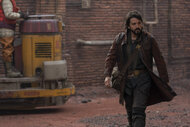Create a free profile to get unlimited access to exclusive videos, sweepstakes, and more!
Star Wars: The Clone Wars kept things intimate for the finale, and was more powerful for it

Ended... the Clone Wars have.
The final arc of Star Wars: The Clone Wars has come to a close, and the series as a whole has ended as well. While the first two installments of this arc definitely went big with the long-awaited "Siege of Mandalore," the final two episodes kept things more contained. Many fans thought that the show would go even bigger, showing Order 66 (again) on a galactic scale.
The show didn't do this at all, and it was more powerful because of it. It focused on two characters who were created specifically for this series: Ahsoka Tano (Ashley Eckstein) and Rex (Dee Bradley Baker). One former Padawan, one Clone, and a whole mess of trouble.
**WARNING: From this point forward, there will be spoilers for the final two episodes of Star Wars: The Clone Wars. If you have not watched them yet, then punch it right out of here and watch before you continue.**
We've already seen everything surrounding Order 66 on a truly giant scale in Star Wars: Revenge of the Sith, so there was no real reason to go back and revisit it in an animated format. That story has been told; we've seen the Republic fall, and it can be watched whenever fans want to watch it. The finale of The Clone Wars did not need to be a finale to everything in the prequel era, and it was only through watching these episodes that it finally became clear.
Instead of the entire Republic falling, the show depicted one Republic cruiser crashing to its doom. The symbolism is clear.
Revenge of the Sith still hangs over the final two episodes like a giant cloud of doom, because even when the characters don't know what is coming, we do. Once Order 66 gets called, Dave Filoni and his team kept the focus on characters who have been left dangling. Though the book Star Wars: Ahsoka by E.K. Johnston recounts a different version of these events, we didn't really know how Ahsoka and Rex handled Order 66 while it was going down. We also didn't know entirely how Maul (Sam Witwer) figured into events, especially once his Mauldalorian escapades were done with. The finale shows us the drama that these three outliers have to deal with, and it is more powerful because it does so.
For 12 years, we've followed Ahsoka and Rex through all kinds of animated adventures. They have yet to appear in any movies, though they both show up in Star Wars Rebels. We knew they survived, we just never saw how. Of all the important turning points in the Star Wars universe, few compare to this one. We've seen how Anakin, Obi-Wan, and everyone else deals with this inevitable narrative turn — but what about our animated originals?
For one thing, we get to see how Rex gets around his Order 66 programming (with Ahsoka's assistance) and is then able to not comply with it. We see how the two of them, together, fight against all of their former comrades. It is exciting for sure, because Ahsoka and Rex are a tested, dynamic force to be reckoned with. Fighting their former brothers-in-arms is difficult to watch, and making things even harder is the emotional turmoil that we don't see, but know is happening elsewhere in the galaxy.
Even though ARC Trooper Jesse and the other Clones (many of them with their helmets painted in Ahsoka's colors) are shooting to kill, Ahsoka refuses to kill any of them. She has Rex set his blasters for stun, and she is always on the defense. They don't know exactly what is going on (aside from "Darth Sidious" taking control and triggering this), so killing is off the table. Things are much harder for them because of this decision.
Maul, by contrast, has no problem killing every Clone in sight like he's Vader at the end of Rogue One. He makes his escape — living to cameo in Solo: A Star Wars Story and then also show up on Star Wars Rebels. Sith-a-phus lives another day — we knew that he did, but seeing him do it through a storm of self-created chaos was a sight to behold. One former Sith takes down a whole Republic cruiser in this episode, and he does it by destroying the hyperdrive using the Force. Obi-Wan Kenobi would later use a more subtle approach to shutting down computerized systems.
Keeping the focus on Ahsoka and Rex also gives the show a powerful final scene. The downed Republic cruiser lies crashed on the ground of a barren moon. In front of it, a whole battalion of dead Clones have been buried by Ahsoka and Rex, with their helmets serving as tombstones. A cloaked Ahsoka stands silent in front of the ranks of the dead, and she lets her lightsaber drop out of her hand.
It's an insanely poetic finish to this series that has been about one giant war, and it is here that both the characters and the audience see how futile it all was. What did it bring them? Exactly what this episode's title promises: victory and death.
The Clones were bred as a disposable army, and here they have been disposed of. Ahsoka's expression almost reads as: "What was the point of all this?" If Revenge of the Sith gave us the tragedy of the Jedi, then here we have the true tragedy of the Clones. They were bred for nothing but a trap, and now the trap has been sprung. There's no further need for them in their original form.
The images of Ahsoka in the graveyard, looking at all that remains (for them) of the Republic, will be the image that haunts us the most as we leave this series. That, and the very final image we receive when Darth Vader himself shows up an unknown amount of time later. A single Clone helmet, painted in Ahsoka's colors, reflects Vader walking away with Ahsoka's lightsaber in its visor. It is devastating, but how did we think this was going to end? What did we think was gonna happen here?
Star Wars: The Clone Wars began with a pop and a bang — it is only proper that a war such as this, a war that was only fought for one Sith's greed, ends with an unsettling disquiet.
These wars are over, but another war has just begun. Ahsoka and Rex will both have a part to play in it, and now we know what emotions will be held in their hearts when they do. When we think of The Clone Wars from this point forward, will we think of Jedi and Clones valiantly mowing down scores of battle droids while bombastic music plays?
No, we won't. Ultimately there is no glory to be found here, only futility, victory, and death. We'll be picturing Clone helmets on sticks, one loyal Clone trooper packing up, and a former Padawan dropping her lightsaber in front of a dead Republic ship.
As Tobias Beckett might say, "There's a lesson to be learned here."


























